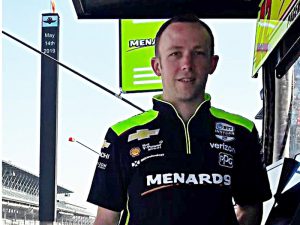These days, we talk at length about the enormous successes of ‘our boys’ on the global motor racing scene.
Rightly so, because this is a golden era of unprecedented scale.
New Zealand drivers have never won on so many circuits, in so many countries, in such a compressed period.
But there’s a whole other world underpinning those successes, and a myriad of ways for Kiwis to be involved in motor racing.
Back in the ‘olden times’ of the Bruce and Denny show, the accepted path to racing glory was a one way ticket on an ocean liner to the UK. Drivers would pitch up at the Cooper works or Jack Brabham’s garage and sweep up or make the tea until they had a chance to talk to the Boss about a racing drive. Often they would be put to work welding new race car monocoques together or fashioning alloy panels for the body.
Following that lead, Kiwis who were lass handy behind the wheel quickly worked out that they could have their fill of motor racing excitement as well as scratch the legendary Kiwi itch for the Big OE. Off we went to be spanners, tyre men, engineers, even designers. Sometimes the jobs were purely motor racing, and sometimes they diverged off into the mainstream auto industry. The excitement was found in Europe, the UK and equally in the USA.
So it’s not surprising that when the Penske pits erupted in celebration of Simon Pagenaud’s recent Indycar race win (he pipped Scott Dixon, who finished second), one of the ‘woohoos’ had a distinctly Kiwi note.

Malcolm Finch is one of those passionate Kiwis, motorsport mad for ages.
“From as early as I can remember I was at a race track with my father when he was racing. Then as a natural progression, I started karting at a young age and then raced in various categories through the years. It was during my first year at university when I started to really focus on an engineering career in motorsport.”
Malcolm studied mechanical engineering at Auckland University and got heavily involved with the practical ‘build a race car’ project which is integral to the automotive studies at MIT.
“I specialised in Mechanical Engineering at the University of Auckland. Alongside a bachelor’s degree, I was also a part of the Formula SAE team, which was supported by some of the faculty at the University.”
He was also using his summers well, working for Toyota Racing New Zealand on the Toyota Racing Series. Malcolm says adding this practical experience is important for Kiwis looking to go offshore.
“Most teams look for engineers who have had some experience with a professional motorsport team. That could be as simple as volunteering on race weekends. Ideally finding a way to work/volunteer for a team while simultaneously studying is a strong resume builder. For a future race car engineer or mechanic, my best advice would be to get as much experience as possible. It is important to get an education or certification to be considered for a motorsport career, however, a lot of racing is hard to teach and best learnt through hands-on experience,” he says.
Fast forward to 2019, and Malcolm is working as a data engineer for Team Penske’s Indycar team. Within the team the data engineers are responsible for many of the running aspects of the both the car and for the electronic components – anything from making wiring looms and testing sensors to on and off track data analysis.
“During a race weekend my focus narrows to the 22 car with Pagenaud where, as a data engineer, I concentrate on fueling, strategy, and in a general sense, making sure the car is performing properly electronically.”




Comments